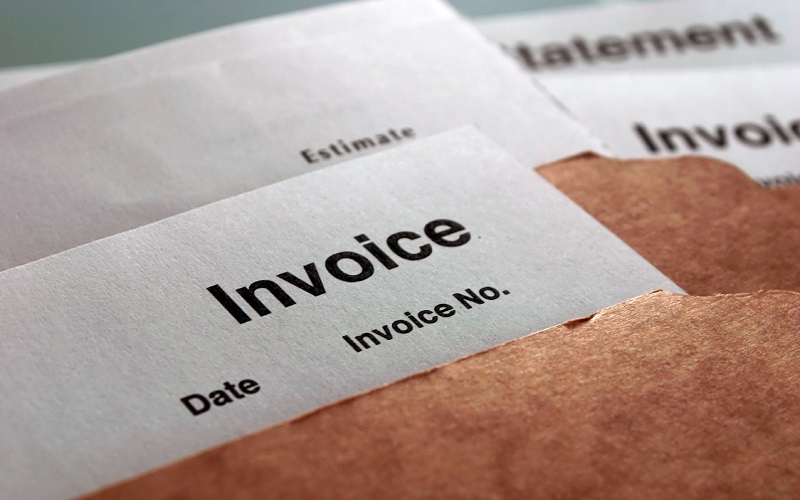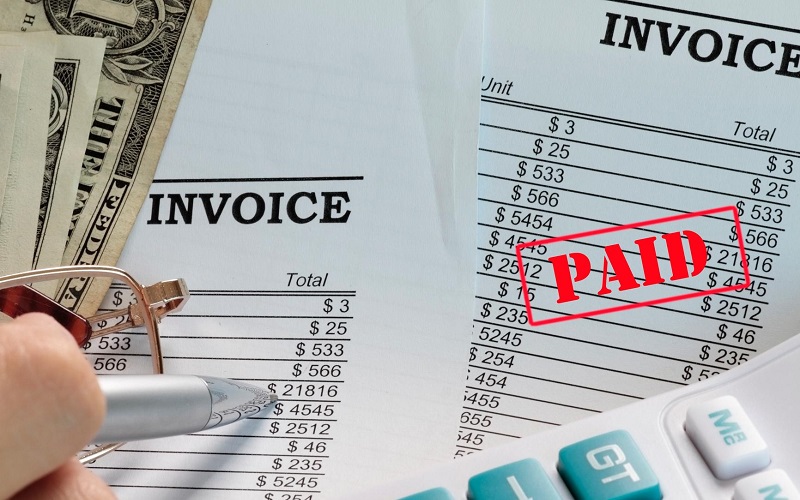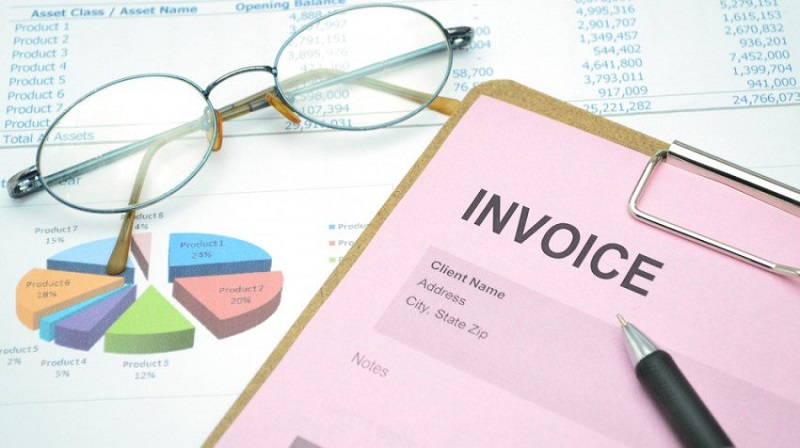What are the details to watch out not to make mistakes in the process of billing?
Proper invoicing is a key element in the relationship with your customers, especially since it is closely related to the fact to request and receive payment for the sale of your products or services. The bills are official documents which enshrine money transactions and that testify an economic relationship between two parties, or between you as a supplier of goods or services and your client as a paying customer.
Yet, often committing billing errors, sometimes seemingly trivial, which can eventually have unpleasant consequences not only for the relationship between you and your customers but also for the administrative, financial and for tax of your business.
Here are 10 typical mistakes that can end up creating big problems …

# 1- Do not send invoices
It may seem absurd, but this is just the most common mistake. How can you claim to be paid by a client if you have not yet sent the bill? Even if I had a business relationship, such as a consulting service, which involves a fixed revenue per month, you cannot and you must not pretend that it is the customer having to remember when to pay you. Send the bill will be the first and the best way to remind them.
Keeping track of invoices issued and the status of their payments every month, you can also get an overview of how your activities, products or services of the most popular, and your customer base.
# 2- No bill promptly
The best time to send an invoice is “now”; you just did what you had to do: sell a product, provide a service, or finish a project. Why wait? Customers can have different payment methods and timing, better to always play in advance and bill as soon as you can. Postponing, risks of “losing the rounds”. For example, if your client is used to account for and pay all suppliers on the 10th of the month, sending your bill 11 you will probably have to wait until the next day.
And if you are lucky enough to have several customers, postpone the issue of an invoice can even take you to forget it altogether.
A delay in billing amounts to a delay in payment. Simple, right?
# 3- Send invoices to the wrong recipient
One of the main causes of the delay of payment is the fact that your invoice steps from hand to hand before you get to the right person. Assuming that you get there, because it might get lost on the way.
If your client is a medium structured, make sure you have a specific contact person to send your invoices. But even in the case of small customers, not take anything for granted: even a simple individual VAT can have a place and a separate administrative headquarters. Make sure you have all the data and all the information needed to submit your invoices to the right person in the right place. If you send your e-mail invoices remember to always put in copy also your sales representative.
Always checks the header of your invoice and the address you’re sending it to. If you already unpleasant send it to the wrong person in the right company, think about how it can even be sending the wrong company! It is a mistake that can happen more easily than you might think, especially if you provide goods or services similar to more customers. Eye!

# 4- Do not specify terms and conditions of payment
Your bill comes to you. And why should always remind your customers about your policy, payment methods to be used, the terms of payment or any delays (to delivery, 30 days, 60 days …) agreed under contract with the customer, possibly indicating a date exact. Between “to be paid within 30 days of receipt” and “to be paid by 12/06/2017” it is evident that specify a precise date is more effective and easier to remember for the customer.
Although it is a practice that still not all kindly and little applied, in terms and in the notes of the invoice you will also propose a small discounts if the bill was payable immediately and a penalty if they are not respected the terms of payment.
Also, be clear on how they want to be paid, providing the invoice with all necessary information, such as your bank details. If possible, it expects more than one form of payment, perhaps also including the possibility of using credit cards or PayPal.
Finally, do not leave any entries related to your tax system, application or not of VAT, withholding tax and any other taxes.
# 5- Not itemize the bill
Do not be superficial, and spin off in your invoice each item. Your customer needs to know exactly what you are paying. For example, if you created a Web site, do not write simply “Web Design = final price”, but specifies each activity you have done (hosting, domain registration, graphic design, content processing, content insertion, test …) assigning each its own rate.
You do not tell a story but provide documentation, and avoids the turns of phrase and uses a simple bulleted list or a table so that everything is clearly visible and understandable.
# 6- Add not agreed increases
Your clients need to know exactly how much you will have to pay. You cannot afford to omit in the estimate any kind of detail, especially if this can result in an unexpected outlay. We go on the simple: you have a B & B and you have agreed on a price with your guest. At the time of issuing the bill, though, add nothing had as the tourist tax, which had never mentioned. It’s not nice, even if it is a tiny figure.
This applies to any kind of surcharge, but also for any entries that have not been discussed in due time. For example, if you commissioned the translation of a text and during construction the customer asks you for an addition, everything stops and adjust the budget, do it approve, and then resume your work. Not continue as if nothing and then charge a different amount than that originally agreed.
It is also your job to make sure that the customer perceives the value of your work. If, by virtue of your interest in maintaining a certain type of relationship, you would rather not touch up the quote and subscribe adding, go ahead, but do so that the customer is aware that it was your choice.
# 7- Neglecting the text and formatting
As we have said, your bill comes to you. It is a document that represents your business, and as such should be taken care of all the details. Typing errors or even computing, numbers and dates wrong, oversights of various types not only make you look unprofessional, but may compromise the payment of the same outcome in addition to often become a black hole of wasted time for correction.
Before you send an invoice, closely controls every part, from your header to the client, verify that you have not omitted any voice and to have made the right calculations. Also, always check the date of issue and the numbering of the bill.
Try to use always the same template for all of your bills, so they are immediately recognizable by your customers. Just a clean and clear format, avoiding any tinsel chart, maintaining a dry and direct style.
Do not you dare send invoices as text or spreadsheet? There is a PDF format, use it!
# 8- Omit Your Logo
We’ve already mentioned that your bill is about you? Maybe not enough. As a document that your customers receive, print and preserve, because your invoice should not have in plain sight on your company logo? In this way, it becomes a kind of business card, which will insert logo next to your contacts, your website and any other information can be used to identify you and contact you by other people.

# 9- Not having a backup of your invoices
Make sure you always have a backup copy of your invoices. If you use a PC dedicated for the administrative, it retains the backups to an external drive or, better yet, use online storage systems like Dropbox, Google Drive or Drive One.
Archive your invoices in an orderly fashion using different media, to avoid the risk of losing them and having to chase customers to recover the copies, we would not have a good figure.
And if you are using a billing software or a restaurant, they now include backup functions, the more reason to use them.
# 10- Neglecting the back payments
Unfortunately, the mere fact that it has issued an invoice does not ensure that this is actually welded, unless, of course, have not been given “cash” and then after payment. But, if a customer does not pay within the prescribed period, do not waste time and act.
The more time you will grant to an insolvent customer and the latter will remain insolvent, in a word the more time passes, the greater the risk that the invoice will not be sealed to you anything.
Once the payment deadline has been exceeded, starts to send an email reminder a week, perhaps starting with a soft like “tone Hello, I have not received the balance of the XXX invoice, you can kindly check the progress”, for then he is increasingly directed. Do not get caught by false scruples and especially not shy about asking for what you did rightfully. It’s amazing how many people feel uncomfortable in situations like this and neglect to urge a customer defaults on payments.
And if it is prolonged, Clarify the voice, take a deep breath and attached to the phone.
